Reader's Choice
Popular articles
Hyaluronic acid is an integral part of the human body. With a decrease in its content in the body, the external condition of the skin deteriorates: it loses its former elasticity, natural shine and color, wrinkles appear. Therefore, it is necessary to feed it. But hyaluronic acid improves not only the state skin integument - it is contained in the intraarticular fluid, therefore, affects the work of the musculoskeletal system.
Today, micro-injections of hyaluronic acid occupy the first place among all the available methods of rejuvenation used in cosmetology.
There are several classifications of hyaluronic acid. The first one has a long polysaccharide chain. The size of the chain affects the effects that hyaluronic acid has on tissues and cells.
Based on the way in which sodium hyaluronate is prepared, it is divided into two types:
Beauty is not eternal, and many girls, whose age has overstepped the mark at 25 years old, begin to discover the first signs of aging: the skin becomes dull, losing its elasticity. This is primarily due to the slowdown in the production of elastin and collagen, the natural building materials that are responsible for the skin condition. Such processes lead to a decrease in the amount of moisture contained in the cells, which certainly entails a decrease in the overall skin tone, dryness and wrinkle formation. Previously, only plastic surgery or a thick layer of cosmetics could correct age-related changes, but today these effective methods have been replaced by a truly effective and safe means - hyaluronic acid. Doctors of the whole world deservedly consider this unique tool of aesthetic cosmetology a real breakthrough in the eternal struggle with age.
Hyaluronic acid is a polysaccharide synthesized by the connective tissue cells of the body. It forms the basis of the intercellular substance of the skin, muscles, nerves, cartilage. The scientific name is sodium hyaluronate, in the form of sodium salt this substance is contained in the human body. Cosmetologists call it easier - hyaluron. Along with structural proteins (elastin and collagen), hyaluronic acid forms an extracellular matrix.
By chemical composition, it is a polymer composed of repetitive disaccharides. Upon contact with water, the substance turns into a gel already at a ratio of 1: 100. The effectiveness of hyaluronic acid in the fight against aging due to its hygroscopicity and viscoelasticity, providing the necessary degree of moisture of the dermis.
Hyaluronic acid plays the role of an intelligent sponge that actively absorbs the fluid, effectively distributing it to all tissues. Only one molecule of hyaluron is able to retain a 500-1000 times greater amount of water.
Hyaluronic acid is involved in a number of important biological processes:
The production of hyaluronate and structural proteins is reduced after 25 years, and by the age of 50 it is completely reduced by half due to the effects of various toxins accumulated in the tissues. Our body synthesizes hyaluronidase - an enzyme that destroys hyaluronate cells. About 70% of the hyaluronic acid contained in the human body is destroyed and restored daily.
Reproduction of hyaluronic acid slows down due to exposure to UV rays. Burns stimulate the rapid breakdown of molecules and the temporary cessation of their production. Stress, violation of natural biorhythms, unhealthy diet, cigarettes, taking a number of medications affect the rate of synthesis and the quality of hyaluronic acid. The "defective" molecules still absorb water, but do not give it away. Excessive accumulated hyaluronate in the deep layers of the dermis leads to the appearance of intercellular edema at its border with the hypoderm, and this leads to dehydration of the epidermis.
Low production of hyaluronic acid, reducing its reserves in the body directly affect the condition of the skin. The layers of the dermis begin to interact worse, due to which the blood supply is disturbed, the resistance of tissues to the action of the external environment deteriorates, the tone decreases, wrinkles appear.
In the human body, several types of hyaluronic acid are produced at once, differing from each other in molecular structure, in particular, in the length of the chain of polysaccharides:
According to the production method, hyaluronic acid can be:
Hyaluronic acid may be unstabilized and stabilized. Unstabilized (native) as close as possible in composition to the natural. Helps to restore the skin elasticity, elasticity, restores lipid, water metabolism in cells and tissues. Requires course use with a frequency of injections once every 1-3 weeks. Stabilized (modified) is obtained by attaching a chain of amino acids or peptides to a molecule, due to which hyaluron does not disintegrate longer, getting inside the body. It has a long-lasting effect (from 6 months).
Hyaluronic acid is used for injection and non-injection procedures, as well as in the composition of cosmetics for care. Preparations differ from each other in the type and concentration of the substance used, its molecular weight, the presence of additives (amino acids, antioxidants, vitamins). To choose the right drug will help a qualified cosmetologist, based on age, skin type, area and location of the treated area, the individual characteristics of the patient.

When subcutaneous injection of hyaluronic acid is observed almost instantaneous effect. The skin on the treated area becomes smooth, taut, moisturized, it starts up the natural processes again. Among injection procedures, the most in demand are:
During non-injection procedures, the skin is enriched with hyaluron gel, by exposure to microcurrents, laser, ultrasound or oxygen flow, injected into the deeper layers. Immediately after the procedure, the effect lasts up to 3 weeks. This method can be applied from the age of 25 when the first signs of age changes appear.
On the market are all sorts of cosmetics based on low molecular weight hyaluronic acid: serum, emulsion, cream, tonic. The effect of their use is less pronounced and long-lasting than that of the procedures, because moisture occurs at the level of the epidermal layer and does not last long. Such cosmetics are ideal for daily care and maintenance of the result from the injection. Concentrated serum with hyaluron is recommended to start using at the first signs of wilting.
The concentration of hyaluronic acid in cosmetics for daily care is 0.005-0.1%. Medical cosmetics may contain 0.1-5% of this substance. In products with a UV factor, the concentration of hyaluron should not exceed 1%. Carefully study the composition before purchase and consult with a specialist.
Procedures based on hyaluronic acid interfere with the natural processes of the body, so it is important to strictly follow the recommendations of the doctor. There are a number of strict contraindications for drugs:
Possible side effects include swelling, redness, hematomas, and swelling, itching, and pain. Biosynthesized hyaluronic acid can cause the development of autoimmune diseases, before the procedure it is necessary to pay attention to the degree of purification of a particular drug.
The first signs of skin aging become noticeable soon after 25 years. To restore the beauty of the skin, its health, among other useful tools, cosmetologists use compositions containing hyaluronic acid, namely injections of preparations created on its basis.
The young body produces enough acid so that the skin on the face and body is elastic, moderately moist. With age, the ability of the synthesis is reduced, there are problems with the joints, immunity, increased intraocular pressure.
The use of hyaluronic acid for the face in the form of injections allows you to effectively restore skin turgor, even in untreated areas.
Externally, the lack of acid is manifested in the withering of the skin, its lethargy, the appearance of small and significant wrinkles, the deepening of nasolabial folds. Council of cosmetologists - use a tool such as hyaluronic acid for the face (injection).
The cost of the course depends on the number of injections assigned. This elixir of youth was created artificially in laboratories in the first half of the last century.
Obvious signs of aging, which can thus be eliminated or leveled:
Hyaluron has a moisturizing, protective effect, stimulates tissue regeneration, regulates water balance. Introduced deep into the skin of the acid molecule eliminates the problem of dehydration, dry skin, producing a lifting effect.
Injections are not the only way to supply the body with an effective acid, you can apply serum, gel, creams with hyaluronic acid. Shown when ingestion tablets, capsules, powders. The effect is always there, but not as noticeable as the result of injections.
The name speaks for itself - the cosmetologist with special preparations restores the facial contours, erases wrinkles, mimic folds.
Hyaluronic acid for the face, injections, their cost is quite affordable and is considered one of the most effective cosmetic directions. Subject to the rules, the achievement of the expected result is possible in short time.
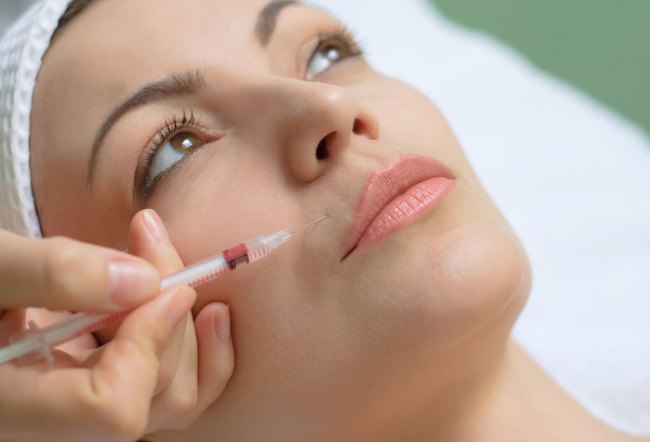
The injection method allows:
In order to restore the contour of the face, fillers, gel fillers for cosmetic injections, are injected deep under the skin with a very fine needle.
Fillers can be synthetic, collagen, autologous, hyaluronic. The latter are the most acceptable, they not only level the skin, remove wrinkles, folds, but renew the skin.
The effect persists for a long time (six months or more), the drug is non-toxic, the introduction is almost painless, the marks of the injections are invisible.
The cosmetologist doctor outlines the injection points depending on the need - in the cheekbones, the nasolabial area, the eyebrows. The number of injections is also determined by the doctor, taking into account the client’s wishes.

The cost of injection ranges from 5 thousand rubles. for 1 ampoule of 1 ml of Chinese Highfiller to 11 and a half thousand German or Swedish preparations (ampoules less than 1 ml):
| Name and manufacturer | Volume | Hyaluronic acid for face injections, cost |
| Restylane (Sweden) | 0.5 ml | from 11 500 rub. |
| Radiesse (Germany) | 0.3 ml | from 11 000 rub. |
| Teosial (Switzerland) | 1 ml | from 10 000 rub. |
| Amaline (Russia) | 1 ml | from 8 500 rub. |
| Yuviderm (USA) | 0.6 ml | from 6 000 rub. |
| Highfiller (China) | 1 ml | from 5 000 rub. |


You can rejuvenate your face and injections of hyaluronic acid in the company with vitamin complexes, plant extracts - mezokokteylyami.
The injection sites are almost invisible. Small point inflammation disappears within 10 minutes, and actively active substancestrengthened with vitamins and extracts useful herbs, continues anti-aging effect.
The composition of the cocktail is determined by the doctor, taking into account the condition of the skin, the susceptibility of clients to certain components.
Hyaluronic acid for the face through an injection, the cost of which depends on the country of origin and on the amount, provides skin nourishment, enhances the antioxidant effect, accelerates regeneration.
The table shows the benchmarks of the cost of the most popular formulations for mesotherapy.
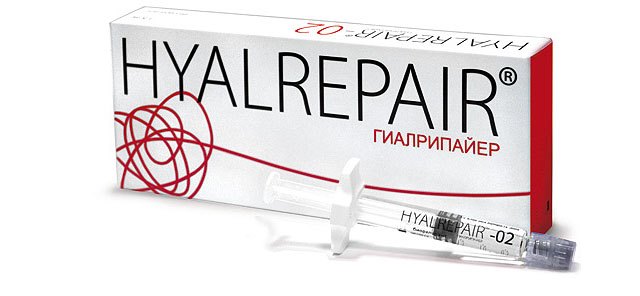
Preparations for the quick and effective filling of the skin with moisture, restoring its elasticity, tone - biorevitalizants, act at the cellular level, stimulating the natural protective functions of the skin.

The course of biorevitalization should be carried out in a specialized salon, under the supervision of a cosmetologist, who determines the points of needle insertion. The course consists of several procedures with a break of about 2 weeks and includes not only injections with the active substance, but also fixing the result.
The cost of hyaluronic acid injection in the form of a biorevitalizant for the face depends on the specific drug and ranges from 4 to 12 thousand rubles.
Bioreparanty act slowly, do not expect instant rejuvenation and smoothing wrinkles, folds. Produced on the basis of hyaluronic acid, they promote its natural formation in the body, provoke an antioxidant effect, which prevents aging of the skin.
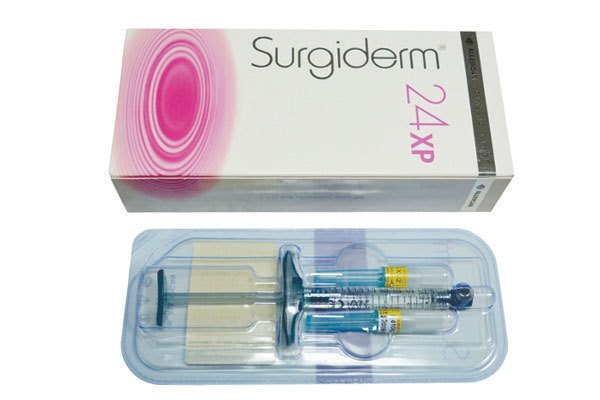 The cost of bioreparant is quite high, as they are the newest class of drugs.
The cost of bioreparant is quite high, as they are the newest class of drugs. The most famous are the American Highlight, the French Surdzhiderm and Juviderm, the Swiss Teovital, the Austrian Princesses, there are also domestic proposals, and the doctor-cosmetologist will help determine the choice.
The duration of one procedure is approximately 30 - 40 minutes, and the cost of such an injection of hyaluronic acid for the face - from 4 thousand rubles. The number of procedures is also prescribed by the doctor.
Every action has a positive and negative side. Hyaluronic acid is also not perfect and, deciding to take a course of rejuvenation, it is useful to know what this means.
Beauty shots are practically safe, but there are some warnings and prohibitions. A categorical ban for pregnant and lactating women, as well as during the acute form of various infections, inflammations, irritations, having chronic forms of somatic diseases and some other warnings.

You should not take injections and those whose skin is prone to the formation of scars, keloids.
To avoid trouble, it is obligatory to consult with a beautician before accepting a course, just reading the list of warnings is not enough. The possibility of unexpected unpleasant consequences should be taken into account:
Such phenomena are rare, but their possibility cannot be completely ignored. A guarantee of a favorable outcome of the procedure may be its holding in the conditions of a properly equipped salon and the work of a qualified doctor.
It is important to protect your face from direct sunlight for several days after the procedure, and subsequently you should not get involved in sunbathing.
Interest in preparations based on hyaluronic acid is growing. The negative consequences are practically reduced to zero, and it must be borne in mind that any intervention in the natural life process may have its drawbacks.
Injections, even the thinnest needle, the introduction of unusual for the body of drugs, gels, fluids can adversely affect health.
Filling the skin with moisture, replenishing it from the inside, slowing down aging is the main result and task of the magic injections. To compensate for the lack of moisture, this polysaccharide, produced by the body over the years, is becoming less and less.
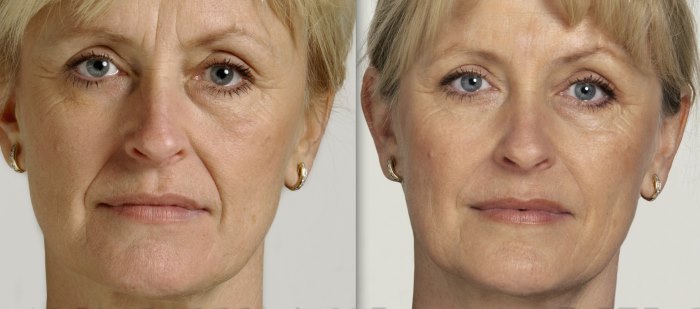
It is important how the miraculous acid for injection is obtained - biosynthesized, of animal origin or artificially produced, and how acceptable it is by the body. The one that is of animal origin is least desirable, in a synthetic one there are no toxins and allergens.
Note! The cost of hyaluronic acid injections for the face is quite high, but you should not look for cheap substitutes - we are talking about your own health. You can rely only on patented, tested brands and products of reputable companies.
During the course of procedures you should listen to your feelings, listen to your body. Sometimes there is a local reaction - peeling, redness, which you need to inform the doctor.
It is obligatory to carry out injections in the conditions of a specialized salon, to trust a qualified specialist. It is also important to warn the doctor about all, even minor, one-time reactions to any drugs.
Important! The correct behavior after the procedures matters, no matter how light and pleasant they are.
The rules are simple:
According to the results of aesthetic methods of changing the appearance of hyaluronic acid injections we can conclude about the effectiveness of this modern method of facial correction. Injections lead to a noticeable improvement in appearance, giving freshness and elasticity to the skin.
Hyaluronic acid for the face, for which it is needed, injections:
Cost of hyaluronic acid injections for lips and results:
Long life without old age was an old and cherished dream of mankind. And here we are already half a step away from this event. And it became possible thanks to revolutionary technologies and the active use of hyaluronic acid in aesthetic medicine.
The term "hyaluronic acid" is familiar to every person who is even slightly interested in cosmetology. But many still wonder why hyaluronic acid is the main tool of modern cosmetology? What merit it is called the star number 1?
IMPORTANT!
Hyaluronic acid is a polysaccharide from the family of glucosaminoglycans, which is a component of various biological structures and fluids. It is found in the cells of humans, animals, and even in the cells of certain bacteria. From the lessons of biology, we know that man consists of cells, cells form organs, and the space between cells and organs is filled with connective tissue.
Hyaluronic acid is part of the connective tissue and is the main element of the extracellular matrix. Connective tissue can be in a liquid and solid state, as well as in the form of a gel. In the liquid state, hyaluronic acid is present in the saliva, in the cerebrospinal fluid, and also in the synovial (fluid that fills the cavity of the joints).
In the solid state, hyaluronate is part of the bones, and in the form of a gel, it is present in the vitreous body, cartilage and extracellular fluid. Hyaluronic acid is synthesized in the skin in the skin by specific cells - fibroblasts. Fibroblasts are cells of the connective tissue, the main function of which is to synthesize, in addition to hyaluronic acid, collagen and elastin.
The main amount of hyaluronic acid is concentrated in the skin, it is located in the connective tissue of the dermis between the fibers of collagen and elastin, as well as in the cells of the stratum corneumum. If we draw a certain analogy and present our skin in the form of a mattress, then we can say that collagen and elastin are springs, and hyaluronic acid is foam rubber that fills the space between them.
As we have noticed from the above, hyaluronic acid is a natural component of our body. It is synthesized in it and is involved in many biological processes. Its role in the body is truly invaluable.
Hyaluronic acid has remarkable properties. The most important and valuable quality is the ability to bind and hold water. It is known that one molecule of hyaluronic acid binds 500 molecules of water. She also has a so-called "diaper effect" - the ability to not release moisture from the skin.
Being an important component of the extracellular matrix, hyaluronate ensures the vital activity of cells, filling the space between them. Hyaluronic acid takes part in the process of proliferation (tissue proliferation by dividing cells), provides transportation of oxygen, lymphocytes and other blood molecules and nutrients to the site of tissue damage and foci of inflammation.

But few people know that, in addition to their miraculous qualities, hyaluronate plays an important role in the migration process malignant tumors and diffusion of streptococcal infection. For this reason, an excess of hyaluronic acid is as dangerous as its deficiency: it all depends on the processes that occur in the body.
The production of hyaluronic acid in the body may accelerate or slow down, its amount may increase or decrease, and this is not at all related to age. Beauticians are accustomed to believing that the lack of hyaluronic acid in the body is a kind of indicator of skin aging, which allows prescribing drugs based on it as a treatment and prevention of age-related skin changes. But it is not.
The most important causes that contribute to the synthesis of hyaluronate are inflammation, tissue damage, or injury. In places of tissue damage, inflammation or injury, the amount of hyaluronic acid increases significantly.
Depending on the number of fragments that make up the hyaluronic acid molecule, it may have a different weight and length.
An important point to consider when using preparations based on hyaluronic acid is the humidity of the air. When the humidity is low, hyaluronic acid gives a reverse moisture effect. The upper layers of the skin are tightened, become dry, creating the effect of a stretched mask on the face. To eliminate these unpleasant sensations, immediately after hyaluronic acid, apply a moisturizing serum or nourishing cream on the face. Nourishing and moisturizing cream will create a feeling of comfort and relieve unpleasant symptoms. Low-molecular forms of hyaluronic acid can improve skin elasticity and partially fill the already formed wrinkles.
Over time, the process of disintegration of hyaluronic acid in the body prevails over its synthesis. What is the reason for this? Strange as it may seem, but contrary to the dominant conviction, it is not at all age that plays the dominant role in this process. The main reason is the damage to the skin by ultraviolet irradiation of type A and B. Under the harmful effects of UV radiation, skin cells are damaged and the synthesis of hyaluronic acid is reduced.

Simultaneously with a decrease in hyaluronic acid in the body, the processes of its decomposition intensify, and the decay products accumulate and are removed from the skin very slowly. In fact, this process is a protective reaction of the body, since UV radiation is the main cause of carcinogenesis, and hyaluronate is involved in the migration and screening of tumor cells.
The second important factor contributing to the degradation of hyaluronic acid is the enzyme hyaluronidase. Hyaluronidase breaks down hyaluronic acid, and this process occurs continuously. The main part of hyaluronate breaks down and is restored again within 24 hours. A complete update of the entire volume of hyaluronic acid occurs within 3-4 days. And this involves the breakdown and new synthesis of hyaluronate in all tissues of the body. The cause of decay may be:
These factors affect not only the amount of synthesized hyaluronic acid, but also its structure. Reducing the amount of hyaluronic acid helps to reduce water in the composition of certain cellular structures and the appearance of the first signs of aging.
In addition, natural age-related processes can lead to an increase in the volume of hyaluronic acid in the dermis, which can cause intercellular edema, on the one hand, and dehydration of the surface layers of the skin, on the other hand.
All these processes have a negative effect on the skin. It becomes dry, flabby, loses its elasticity and elasticity, numerous wrinkles form on it. And as a result: the reflection in the mirror is not at all happy and becomes a source of chagrin.
In cosmetology, two industrial types of hyaluronic acid are used:
For a long time, hyaluronic acid of animal origin was used in cosmetology. It was obtained by grinding the organs of animals (crests of mature roosters, umbilical cords) as a result of two-phase cleaning. Proteins and peptides of the animal were preserved in such a preparation, which contributed to the development of allergic reactions and rejection of the preparation.

The body positioned this form of hyaluronate as a foreign substance and triggered a reaction to eliminate the alien. All this naturally influenced the aesthetic result of the procedure. And instead of the long-awaited rejuvenation, extra efforts were added to eliminate the complications that arose. Nowadays, hyaluronic acid of animal origin is almost never used.
But science does not stand still. New technologies and drugs are being created that can completely minimize side effects, complications and risks. Therefore, now in cosmetology they use hyaluronic acid, obtained by biochemical synthesis.
For these purposes, use of bacterial cultures, and specifically streptococci grown on a plant-based (wheat broth). This method is based on the ability of some microorganisms to synthesize hyaluronic acid. The biochemical method allows to achieve a large amount of a substance with the desired molecular weight and with an acceptable structure.
Directly in the fillers used:
The action of hyaluronic acid depends on its type. Each species has its own advantages and its own effects. Of great importance is the degree of purification of the drug. Some preparations based on hyaluronate contain additional substances in the form of vitamins, amino acids, biological active substances. Others are "pure", they contain only hyaluronic acid, which acts as an independent component. Stabilized hyaluronic acid is considered the most effective.

Preparations based on stabilized hyaluronic acid are stored for a long time in the skin, form the basis of hydroreplacement preparations, and trigger regenerative processes in the dermis.
Hyaluronic acid molecule is very sensitive. It reacts sharply to chemical modification: thermal or mechanical. For this reason, it should be properly maintained during chemical reactions. Stabilized hyaluronic acid is obtained by the method of biochemical synthesis, followed by a process of crosslinking, which is called stabilization (the formation of intersecting crosslinks between hyaluronic acid molecules).
Hyaluronic acid molecules are crosslinked in order to prevent their rapid degradation. Such hyaluronic acid shows long clinical effects when it is introduced into the skin. After crosslinking, the obtained gels undergo purification, which is a very laborious process and is a decisive factor in the pricing of preparations of stabilizing hyaluronic acid.
Depending on the level of stabilization, gels of different viscosities are produced to eliminate various aesthetic problems: little stabilized — to eliminate fine wrinkles, more stabilized and more viscous — to correct nasolabial folds and restore lost volumes.
Stabilized hyaluronic acid is used in contouring practice and when reinforcing the face, since this type of hyaluronate holds volume well. That is, when it is necessary to fill in the lost volumes, for example, cheeks, push out the nasolabial folds from the outside, simulate the facial contour and fill the dips on the face, stabilized hyaluronic acid is used.
Unstabilized hyaluronic acid is used in mesotherapy and biorevitalization to hydrate tissues and improve skin elasticity.
Injection methods and techniques based on preparations with hyaluronic acid give fantastic results. But not all hyaluronic acid helps to improve skin characteristics. In order for the regeneration mechanisms to start in the dermis, several conditions must be met:
If these conditions are not met, the fibroblasts are not activated and the rejuvenation process does not start.
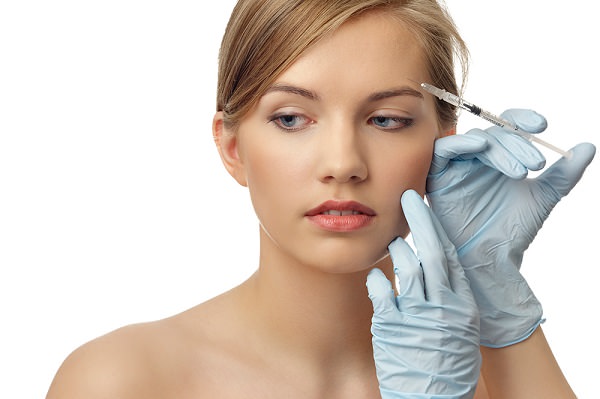
Preparations based on hyaluronic acid are used in the following injection techniques:
Biorevitalization is the most sought-after and effective procedure in cosmetology. It is based on the introduction of hyaluronic acid in the middle layers of the skin. It is used in all cases of aging skin aging, in the treatment of acne and postpartum stretch marks.
Mesotherapy - the introduction of hyaluronic acid and cocktails based on it by the method of multiple injections.
Bioreparation - the introduction of hyaluronic acid with vitamins, amino acids and peptides.
Redermalization - the introduction of injections of hyaluronic acid and sodium succinate (a derivative of succinic acid).
Contour plastics - replenishment of lost volumes with hyaluronic gel.
Face bioarrreation - restoration of the contour outline of the oval face with hyaluronic biogel.
Despite the fact that hyaluronic acid is synthesized by our body, and modified preparations based on it have a high degree of purification, there are still cases of drug rejection and the occurrence of allergic reactions. This is due to the fact that it is impossible to completely clear the resulting preparation from the content of foreign protein impurities. It is these impurities that cause undesirable side effects and complications. Also, the additional introduction of hyaluronic acid into the body can cause unintended consequences, since it plays a large role in the migration of malignant tumors and the spread of various infections. There are a number of serious contraindications that must be considered. Do not use drugs based on hyaluronic acid in the following cases:

Failure to follow these warnings can lead to serious consequences.
Any miracle substance causes a lot of disputes and interpretations, in which there is very little truth, but a lot of fiction. Overly impressionable natures ascribe hyaluronic acid to magical and magical properties, then they are looking for a catch and hidden conspiracies everywhere. Consider some well-established myths.
Myth one: Injections with hyaluronic acid are addictive.
This is not true. "Get hooked on the needle" can only be from a psychological point of view. When a patient uses effective cosmetics, he notices how his appearance improves. He likes this state, his self-esteem rises, he begins to get used to it. Increasing desire to look better and better. But it has nothing to do with hyaluronic acid. Hyaluronic acid in creams acts only on the surface layer of the epidermis. Injections, hyaluronic acid stimulates its own cells, returning them to natural processes, which they have forgotten as they grow older. And after the expiration of the hyaluronic acid decomposes in the body and disappears completely. It can not cause addiction.
Myth Two: a large molecular weight of hyaluronic acid does not allow it to penetrate the skin.
Partly true. If we are talking about cosmetic preparations in the form of creams, emulsions, serums, then it is. These drugs are designed to "work" in the upper layers of the epidermis. They are not a medicine and should not penetrate the skin barrier. But the fact is that scientists have long learned to break up a hyaluronic acid molecule and create its low molecular weight form. Low molecular weight hyaluronic acid contained in the cream is fully capable of penetrating the skin.
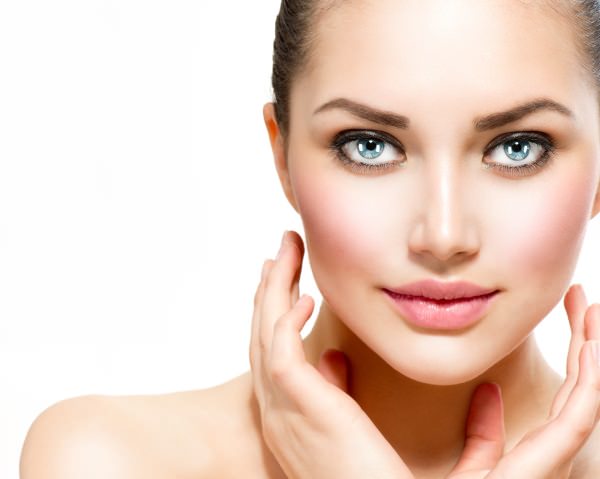
The third myth: hyaluronic acid in injections contributes to an increase in intraocular pressure.
Hyaluronic acid is a part of many biological fluids, it is a component of our body, it is present in many organs, in particular, it is a part of the vitreous body. For the first time in history, hyaluronic acid was used in ophthalmology. For this reason, it can not increase the intraocular pressure.
Myth Four: Beauty shots with botulin and hyaluronic acid are the same.
Very illiterate statement. Botulinum is a neurotoxin, a waste product of the bacteria Clostridium botulinum. Botulin-based drugs paralyze the muscle, preventing it from contracting. It does not affect the skin mechanisms, does not start the process of cell regeneration, but only for a time relaxes the muscle and thereby helps eliminate wrinkles. Hyaluronic acid is a part of our body, it starts the process of regeneration and activation of the cells of the dermis, moisturizes the skin, fills up the lost volumes. These are two completely different substances, they have different functions and roles.
A very common misconception. It is necessary to protect the skin at any time of the year, especially in winter, when dry conditioned air and hot air from batteries in rooms contribute to dryness and dehydration of the skin. You just need to know what is applied moisturizer for half an hour before going to frost. During this period of the year it is necessary to strengthen both nourish and moisturize the skin.
SLIM FIGURE!
Myth six: Hyaluronic acid injections draw moisture from the deeper layers of the skin.
Of course, it is not. Everything happens exactly the opposite. Hyaluronic acid moisturizes, nourishes the skin with moisture. In our body, the breakdown and synthesis of hyaluronic acid occurs every day. And every three to four days, the amount of hyaluronic acid in all systems and organs is completely replenished. Injections or creams are not capable of "pulling" water out of the deep layers of the skin, also because hyaluronic acid has the "diaper effect" and does not give up moisture from the skin.
In modern cosmetology, a powerful tool - hyaluronic acid. She became the subject of serious scientific research and was actively used in aesthetic medicine. Over the past few years, hyaluronic acid has proven its effectiveness, recognized worldwide. Based on it, a whole industry of anti-aging technologies and preparations has been built. But in order not to fall into the trap of one's own addictions, one must become familiar with its healing effects, production methods and species. After all, even the most miraculous drug can bring both benefit and harm.
Are you one of those millions of women who are struggling with being overweight?
And all your attempts to lose weight did not succeed?
And have you already thought about radical measures? It is understandable, because slim figure - is an indicator of health and a reason for pride. In addition, it is at least human longevity. And the fact that the person losing " overweight"Looks younger - an axiom that does not require proof.
This is a natural polysaccharide, produced by the human body, sludge comes along with the products. Hyaluronic acid is used at home and salon procedures in the form of tablets or injections for additional nutrition of the skin, their rejuvenation. In medicine, the tool has found its use in the treatment of joint pain. The Latin name for this element is hyaluronic acid.
For most girls, this is a special tool that is designed to rejuvenate the skin. Few people know what hyaluron is, because familiarity with this element begins when additional moisture is needed. The substance itself refers to the natural structural component of human skin, which is located in the connective tissue of the body. Hyaluronic acid helps maintain water balance in normal conditions.
The body in its youth is able to actively synthesize substances, therefore, problems with flabbiness of the skin, wrinkles up to 30 years does not arise. Integuments receive natural moistening in necessary quantities. Over time, the synthesis slows down and signs of aging begin to appear, so the effect of hyaluronic acid in cosmetology has become very popular.
The effectiveness of hyaluronoplasty due to the positive effect of the element on the skin. A good result was recorded in the treatment of joints due to the fact that the composition of hyaluronic acid is suitable as a lubricant. The following properties of the substance are considered key:
The action of the acid is used both in medicine and cosmetics. You can purchase ready-made products or make your own at home. The positive side of hyaluronic acid is the following:
This remedy is not a panacea and against the background of a large number of positives, there are also disadvantages that you must tell a specialist and consultation before the procedure. The main disadvantages include:

A large number of cosmetics contains hyaluronic component, which are intended for regular use. To achieve the visible effect of such drugs help with complex application: masks, tonics, creams, injections, tablets. The minimum rate is a month. It is recommended to use medicines with hyaluronic acid in case of:
The benefits of rejuvenating the skin of this element are proven, but the use of hyaluronic acid has some limitations. It is contraindicated to use this component in the following cases:
Side effects are possible after using acid. There are few cases recorded, but experts recommend that skin tests be performed before use to avoid them altogether. Symptoms pass after 2-3 hours after application, if this does not happen, you should consult a doctor. The most common are the following negative consequences:
Many well-known companies have included this component in the formula of their funds. There are well-known Korean companies that have become the leaders of sales in the market, for example, Holika Holik or Toni Moli, and the preparations of the company Friderm are also popular. Beauticians use hyaluronic acid in salon procedures, but if they wish, women can use the products themselves.
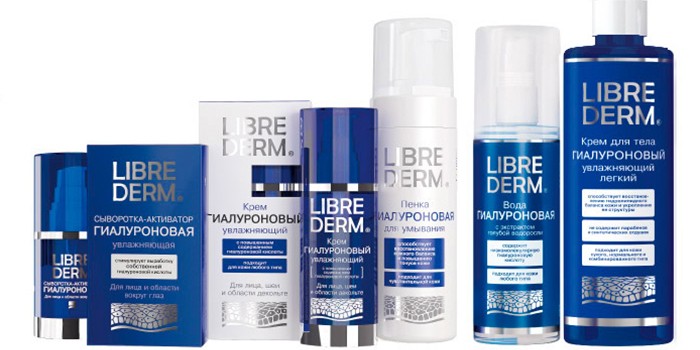
This component can be used in several ways. As a rule, chooses which procedure to do depending on the requirements and stage. The most popular is the non-injection type, which involves the use of ointments, lotions, masks and creams. The age of customers is usually in the range of 25-60 years. In beauty salons, they apply the method of introducing the means into the skin using laser beams, ultrasound, microcurrents or oxygen.
The effect of the procedure lasts no more than 1 month. To improve the effectiveness of the proposed injection method. There are several variants of this method of administration:
All of these options for using hyaluronic acid will give tangible results only with a long course. Efficiency also depends on the stage of destruction of the skin. The cost of these procedures is not low, so at home you can use special tools that are easy to find at the pharmacy, for example:
This substance is one of the fundamental components of the work, the structure of the joints. Hyaluronate in the human body is part of the synovial fluid (joint lubrication, saliva, blood. There is always about 15 grams of acid in the human body. An additional source of the component is nutrition and the preparations described below:
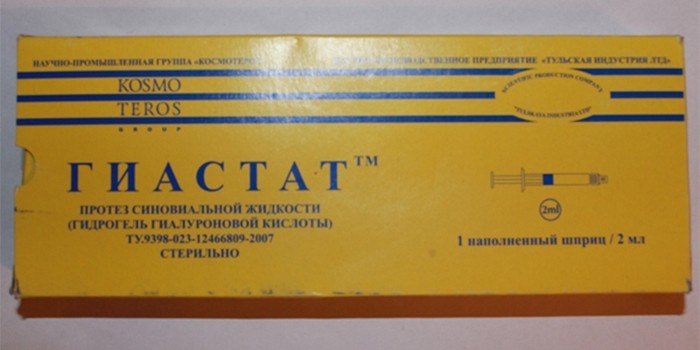
Cosmetic companies often include this component in the composition of their medicines. Known to be Liberderm with hyaluronic acid for the face, which is suitable for all skin types, even for dried and hypersensitive. A large amount of low molecular weight acid has positive effects:
It helps to remove the early signs of aging on young skin, the cream is recommended for daily care of the face, neck and décolleté area. this cream is distributed in a 50 ml bottle with a convenient dispenser; it is produced in Russia, the cost is 400-500 rubles. The line Liberiderm includes other forms of drug release: serum, water, etc. There are very few negative reviews about these products, which indicates the reliability of funds. The following drugs deserve attention as well:
The drug is available in several forms: capsules, powder, injection. Can buy finished product or make a mask by yourself at home. For each form, there is an instruction on how to use hyaluronic acid. For each form, there is a dosage for the reception to get the desired result, as they should be applied described below.
Acceptance of this form is the traditional way - inside. Grind. chew or dissolve the capsules do not need, you should drink plenty of water. Ignore this item can not be, during the day you need to drink at least 2 liters of water (not coffee or drink, and water). The correct dosage is 1 tablet 3 times a day with meals. The course is at least 4 weeks, but if the medication is taken to solve problems with bones and joints, the duration is determined by the doctor.

Injections with hyaluronic acid, as a rule, are carried out either for the treatment of joint pain or for cosmetic procedures. In the second case, more than 30 mg for one site cannot be used. If the skin is too loose and additional injections are required, they are carried out separately. Anesthesia for the correction of folds, wrinkles is not needed, with an increase in the lips will require a blockade of nerve endings.
For the treatment of wrinkles, wrinkles, apply the technique of linear injection, you can replace it with a series of point injections. When the needle is cleared, the needle should face upward, and the needle contour should remain visible when the needle is punctured. The solution must be completely withdrawn before the needle is removed from the skin. This will help prevent material from escaping from the puncture site.
From hyaluronic substances can make an aqueous solution for the face. To do this, you can use the following instructions:
The consistency of the powder should be homogeneous, knead the lumps, if they formed. You can apply the prepared solution several times to keep medicinal properties medication, it must be stored in the freezer. Apply the solution to clean skin, apply a cream or a mask that fits your skin type on top.
If desired, each girl can independently prepare a nutrient for the skin. Mask is made with hyaluronic acid or sodium hyaluronate. Both of these drugs can be found on the pharmacy shelves. There are several recipes for self-cooking. Creates a hyaluronic face mask of several components. You can use any method of cooking, which is described below.
Mask with green tea
Ingredients:
Cooking method:

Simple mask
Ingredients:
Cooking method:
Alginate mask
Ingredients:
Cooking method:
This substance belongs to dietary supplements (dietary supplement), therefore does not require a prescription for purchase. How much will cost means depends on the region where you will buy the medication. The estimated price for the drug in Moscow is as follows:
| Related articles: | |
|
Decoding of markings and informational signs
Federal Customs Service State Educational ... Tea with milk: more good or all the same harm?
What is the use of this "cocktail", and also about whether it can harm, ... Skin antiseptic for hands
On the shelves of shops and pharmacies you can find various means for hygiene: ... | |